"We trusted the government not to screw us," said Edward Snowden. "But they did. We trusted the tech companies not to take advantage of us. But they did. That is going to happen again, because that is the nature of power."
FOMC Meeting Starts Tomorrow
I’ve been saying that “QT” is a joke forever. (Via Steve Donzé.)
Inception to date, the "plan" was $750 billion of QT. The "end result" is $100 billion in QE instead.
Here you go: CBRE chief economist says a mild recession lies ahead, but real estate observers and players can take heart in long-term factors like an “economic revival” in 2024.
CRE: “Things have come to a halt.”
Mike Zlotnick of Tempo Funding “Office is a bloodbath, no question about it…Transaction volume is down, and I think it’s beginning to affect residential too. So we’re off in the last year transactions about 75%…”
Interest-Only Loans Helped Commercial Property Boom. Now They’re Coming Due. Ya think?
Interest-only loans as a share of new commercial mortgage-backed securities issuance increased to 88% in 2021, up from 51% in 2013, according to Trepp.
Again, this anonymous comment about CRE investors seems to have been deleted but I think it’s 100% spot on. I have absolutely no sympathy for these people, their investors or their lenders:
[These are] highly leveraged commercial office investment groups we are talking about here…mortgaged to the gills to maximize real estate capital gains under eternal ZIRP that has ended and the only thing keeping the cash flowing was unsustainably low cost of money now cut off. Because if they had any more cash flowing they would have leveraged it into more property again. Basically, most of the market. The fast money flippers. The smartest guys in the room.
NAV Monitor: US office REITs end May with largest discount to NAV Maybe the NAV’s are wrong?
Delinquencies spiked in May on mortgage bonds tied to offices
Blackstone Real Estate Income Trust Inc., a non-traded real estate investment trust sponsored by Blackstone Group, received redemption requests totaling $4.4 billion in May, which decreased by 4% month-over-month and 18% lower compared to January 2023, according to the company. In accordance with their repurchase plan, BREIT is fulfilling approximately $1.3 billion, which is equal to 2% of NAV and represents 30% of the shares submitted for repurchase. May marks the seventh straight month during which BREIT has limited repurchases requests.
Value of mortgage debt outstanding on multifamily residences in the United States from 2001 to 2022 (billions)
I tried to search for this data at the St. Louis Fed’s site and all 19 series seem to have been “Discontinued.” Why? Anyone have a link to this data?
An apartment borrower in Dallas in 2021 could, on average, have gotten a loan at a 64.4% LTV ratio, but only get 59.0% so far in 2023…Assuming that a borrower received an interest-only loan in 2013 and maxed out on the LTV, given a USD 69,455 price per unit for Dallas apartments, it would have resulted in a first mortgage of roughly USD 46,513. (Also, to simplify things, we assume that there is no mezzanine portion of the capital stack.) Given the price growth between 2013 and 2023, this investor could refinance in 2023 and not need to put any additional equity into the deal.
Conditions are not looking as good for Manhattan office properties. An investor who bought at USD 680 per square foot in 2013 has seen a cumulative 4.9% gain in pricing since the initial purchase. The achievable LTV has plummeted in the interim, however, to 54.0% from 64.4%. The USD 438 per square foot that could have been financed in 2013 has now fallen to USD 391 in 2023. Assuming the maximum loan possible, this investor would need to find an additional USD 47 per square foot of new equity to refinance at recent levels.
An investor who may be worried likely bought into the Manhattan office market more recently. An asset purchased in 2021, for instance, has seen a 15% decline in value so far. Combine that drop with the lower LTVs on offer, and an investor would need to find an additional USD 100 per square foot to make refinancing work. This figure would represent roughly 14% of the asset value.
Texas Leads the Country in Population Growth
Goldman Sachs analysts pegged the average coupon on new loans from Wall Street to finance hotels, shopping centers and other commercial property types at slightly more than 7% (see chart), roughly double the pandemic lows of closer to 3.5%.
Inland Empire (CA) Industrial Sublet Space
Charlotte, North Carolina In the first quarter of 2019, the uptown vacancy rate was 7.2%, compared to 16.4% in Q1 of this year, according to CoStar data. Citywide vacancy was 6.7% and 12.7%, respectively…CoStar data shows the average citywide rental rate in the first quarter of 2019 at $26.28; this year, it was $32.46. The gap in uptown’s rates are a bit narrower, with 2019’s first-quarter rate at $32.80 and rising this year to $35.72.
Some homebuilders are cutting corners as demand heats up I had some examples in my earlier post here. As one of the comments I saw said, “None of this is a new phenomenon. Stories like this were rampant during the run up to GFC. Swapping cabinet doors, fixtures, appliances. Builders have been doing this for a long time.”
Airbnb Sues New York City Over Short-Term Rental Law, Claiming $85M In Damages Airbnb is suing New York City, claiming regulations that require short-term rentals to be formally registered is forcing it to remove listings from the platform and costing it millions. (I really don’t like AirBnb - RH)
I’d send this to my friends looking for houses but it’d just depress them: “Found some San Diego magazines from 1973 and 1982 and took some pics of the real estate listings...”
Now of course some of these amounts were a lot of money - back in 1973 and 1982 - but, ballpark, from what I’ve seen over the last sixty years prices in California went from 3x one-income to 3x two-incomes to today maybe 10x-15x two-incomes.

This is very common in parts of California:
Then again, I don’t think I like this: States seek to bar Chinese citizens from buying homes
Picking winners and losers as always: Great Canadian housing bailout: How real estate unaffordability is being propped up
While prior budgets had at least paid lip service to the notion of bringing down real estate prices, the new measures in Federal Budget 2023 were focused entirely on the demand-side of the equation. The government would not be making homes more affordable, but they would be making it just a bit easier to bid up the homes that were already in place.
There was the Tax-Free First Home Savings Account, which would allow Canadians to stash away $40,000 for a downpayment, tax-free. Tax credits were increased for first-time homebuyers. Millions of Canadians were also just straight-up handed an extra $500 through a one-time expansion to the Canadian Housing Benefit.
“Canada’s 2022 budget is already trying to bail out real estate by creating demand,” declared an analysis by Better Dwelling.
I don’t usually look at this, but the dollar has been rising against the yuan…
Hubbert’s peak is here I posted the link the other day but here are a few things that jumped out at me. Much better to read it in full if you’re interested in this stuff. I like the thinking at Horizon Kinetics (and own a little of their INFL ETF).
We count 7 and 9 billion barrels of recoverable oil in the Eagle Ford and Bakken, respectively, of which 65% and 55% have been produced. Consistent with Hubbert’s theories, both basins have been unable to grow after crossing the 50% mark. The Eagle Ford produced half its recoverable reserves in August 2019; production has fallen 18% since. The Bakken produced half of its reserves in 2022, and production has since been flat. Our models tell us the Permian will ultimately recover 34 bn barrels of oil, of which 14 bn or 41% have already been produced. At current production levels, the Permian will have produced half its recoverable reserves sometime in late 2024; at this point, it will most likely stop growing, just like the other two basins…
If we are correct, the age of shale growth is now behind us, and the reality of Hubbert’s Peak is at hand. The immense growth of the shales over the past decade has blinded many analysts to the declining trends in global conventional production. That luxury is about to end.
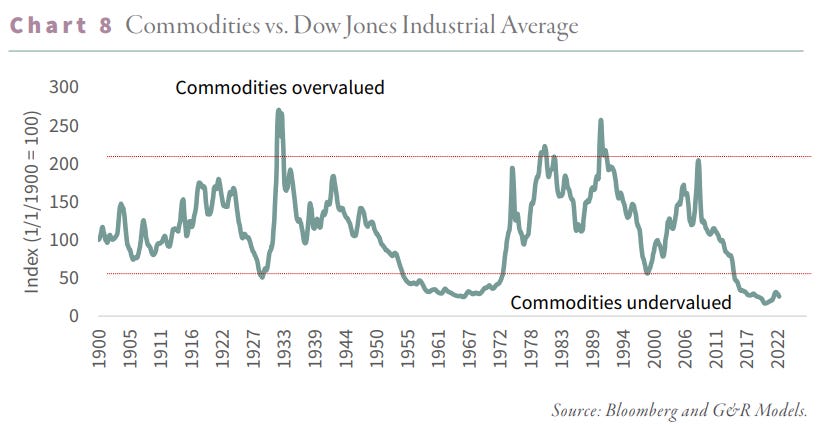
Excess money creation and easy credit preceded every period of radical commodity undervaluation. In the 1920s, the US Federal Reserve engaged in its first bout of quantitative easing. Britain had suspended gold convertibility of the pound during World War I. Once hostilities ended, Britain was desperate to return to the gold standard at its pre-war exchange rate. Federal Reserve Chairman Benjamin Strong tried to help Britain achieve its goal by lowering short-term US interest rates despite a robust US economy, helping devalue the dollar and push the pound. Strong bought significant quantities of short-term treasury bills in 1924 and 1927.
Mike Green with Grant Williams
So the example that I use for people all the time is, again, the Vanguard Total Market index. So remember that this is over a trillion dollar fund. It has, as of my last check on it, $83 million worth of liquidity to meet redemptions. Now, they actually aren’t going to meet it out of that and they do have small lines of credit that they can use to facilitate daily liquidity. But when we start talking about a trillion dollar fund that has to sell into the market in reduced liquidity conditions... We’ve all lived through billion dollar fund blowups that we saw substantively affect the S&P 500. Imagine a one or a 5% redemption coming out of a Vanguard type product. We just can’t handle it. There’s no ability to manage against that liquidity.
Snowden Warns Today's Surveillance Technology Makes 2013 Look Like 'Child's Play'
What really went on inside the Wuhan lab weeks before Covid erupted
ZH Summary: Covid-19 Created In Wuhan Lab Through Classified Bioweapons Program: US Investigators
Never forget the censorship:


















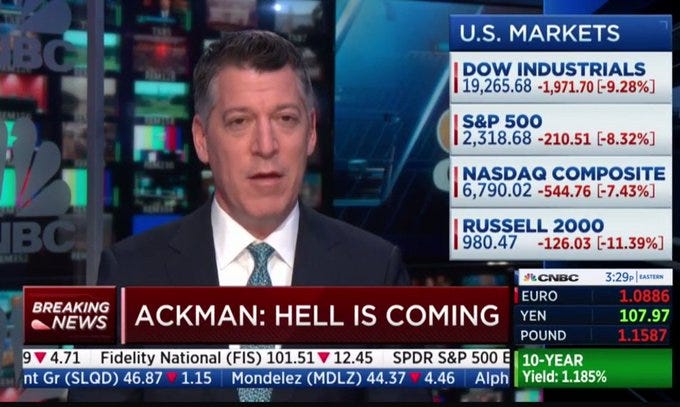


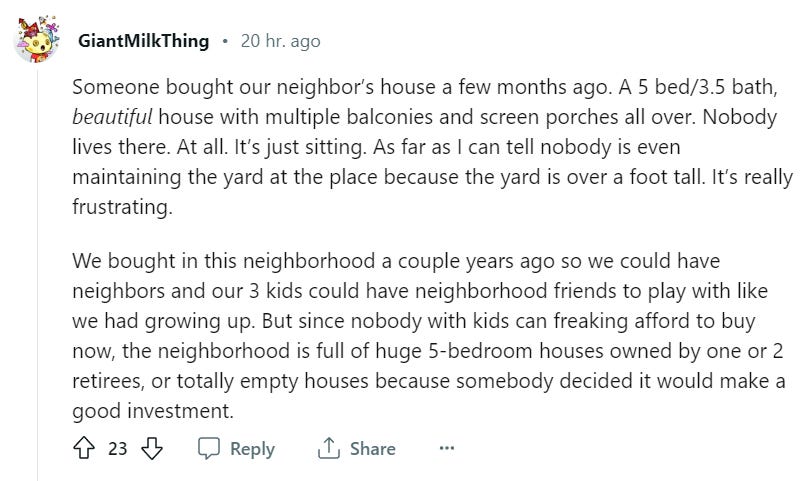

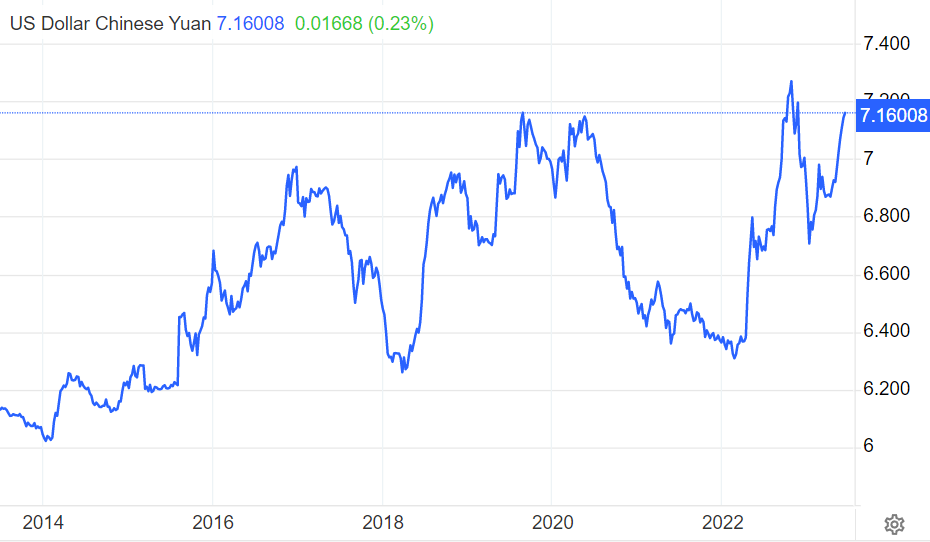






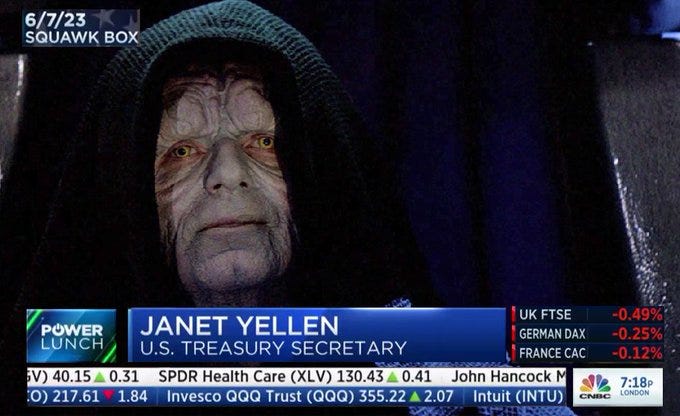
It's always fun to see how the mavens of the "managed economy" are doing a century after Ludwig von Mises completely discredited their ideas. Markets will market.
Zero Hedge is back on twitter I just looked